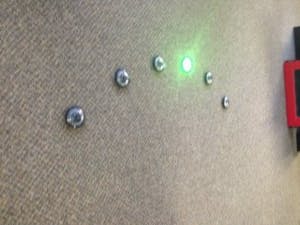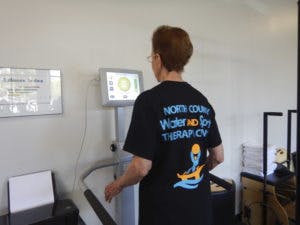We are bunch of live wires! Neuroplasticity of Human Beings!
Often the human nervous system is compared to electrical wires and circuits. It was once thought that after injury or at a certain age these connections were stationary and unable to regenerate. In 2000, American neuropsychologist, Eric Kandel was awarded the Nobel prize in neuroscience for his discovery that the brain’s neural connections can grow and strengthen throughout our lives.
This is good news, unlike the filaments in our electronic gadgets our nerves are not inanimate wires, they are alive with the ability to form new stronger connections with the right stimulation.
Neuroplasticity is the term used to describe the brain’s ability to create new connections throughout our lifespan. The benefits of these new connections include improved coordination, balance and physical skill, along with improved cognition and even mood. Ways you can promote the formation of these new pathways and increase your ‘brain health’ include:
- Get physical exercise.
Our brains consume about 20% of the oxygen we take in. Physical activity increases the blood flow and oxygen levels to the brain for greater functioning. - Learn something new every day.
- Water and feed your brain.
Stay hydrated and eat ‘brain healthy’ foods such as walnuts, green/ leafy vegetables, dark chocolate, foods with monounsaturated fat (olive oil), cruciferous vegetables, foods with omega 3, and lots of berries. - Manage stress/ learn meditation.
Excessive stress has been shown to reduce neuroplasticity of the brain. - Challenge your brain with intellectual activities and games.
- Develop stimulating friendships: interact with others.
- Laugh often.
Laughter reduces stress, releasing various chemicals, enhancing the efficiency of the immune system along with changing the brain wave activity towards what is called a “gamma frequency,” increasing memory and recall.
With injury, illness and lack of activity not only do the muscles and joints lose function but the connection from the body to the brain becomes altered. These connections do not return automatically and can lead to limitations in the future if not restored. In rehabilitation, we utilize techniques to promote neuroplasticity with varying a task or exercise. Adding cognitive challenges or additional physical tasks to a simple exercise helps the brain learn to think and act at the same time. This skill is essential in not only in sports but maintaining balance and navigating through our daily lives. For example, we might have a person stand on one leg while throwing a ball requiring the brain process both input from the lower extremity to keep balance but also the upper extremities and eyes to catch a ball. To increase the challenge, we could then ask the person to count backwards by three requiring the brain to engage in a cognitive task.
At North County Water and Sports Therapy Center we have a couple of additional tools to improve neurocognitive efficiency.
- Fitlights are a series of programmable discs with various colored lights that can be set up to illuminate in a random or specific sequence with the goal of turning off the light by tapping or reaching toward the correct light. The software program allows us to keep track of reaction time and success rate as a way of demonstrating progress. In fact, Steph Curry of the Golden State Warriors works with his trainer utilizing this technology to stay on the top of his game.


 fitlights, random pattern with different colors
fitlights, random pattern with different colors - Biodex Balance System is a computerized force plate with feedback screen. You can think of it as the fancy Wii fit game providing both testing and training capabilities working on balance and postural control.

Working balance and stability with feedback from the Biodex SD
The best part about neuroplasticity and being made up of ‘live wires’ is that although it may happen faster and to a greater extent in the young it possible to train your brain not matter your age.
Go outside, take a walk. Better yet walk with a friend, try a new trail and discuss the latest book you have read, tell a joke. Your body and your brain will thank you!
References:
Cramer, S. C., Sur, M., Dobkin, B. H., O’Brien, C., Sanger, T. D., Trojanowski, J. Q., … Vinogradov, S. (2011). Harnessing neuroplasticity for clinical applications. Brain, 134(6), 1591–1609. https://doi.org/10.1093/brain/awr039
Fuchs, Eberhard, and Gabriele Flügge. “Adult Neuroplasticity: More Than 40 Years of Research.” Neural Plasticity 2014 (2014).
Pelletier R, Higgins J, Bourbonnais D. Is neuroplasticity in the central nervous system the missing link to our understanding of chronic musculoskeletal disorders? BMC Musculoskelet Disord. 2015;16(1):25.
Smith, G. S. (2013). Aging and neuroplasticity. Dialogues in Clinical Neuroscience, 15(1), 3–5.
